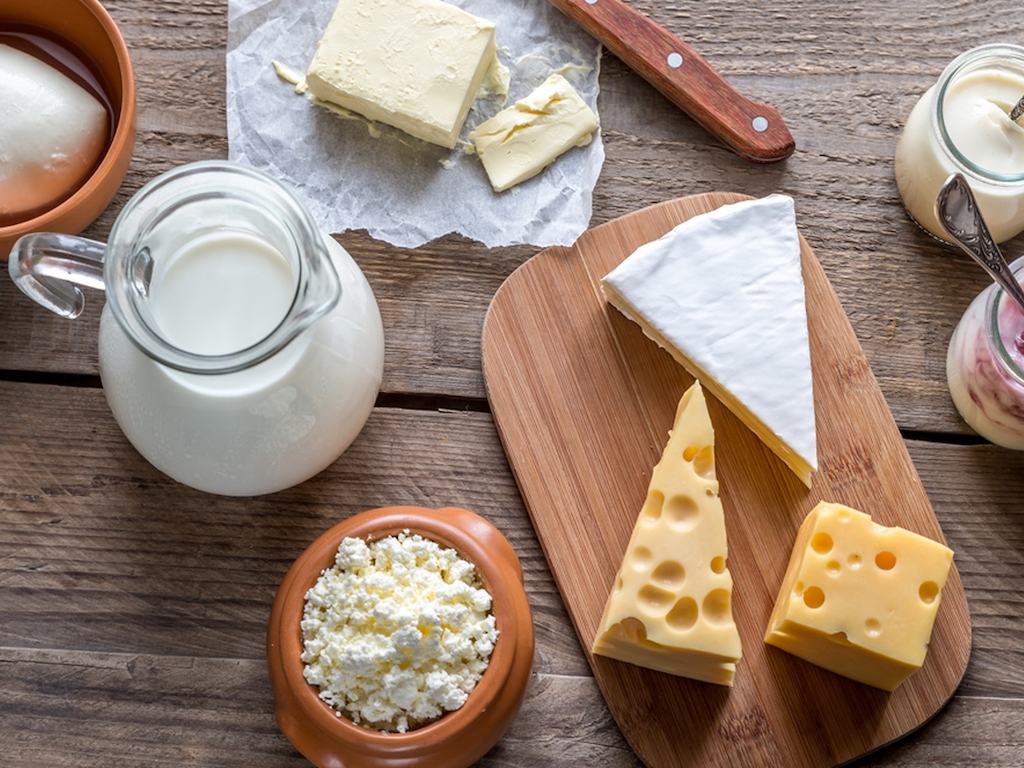Many people know dairy foods are an important source of nutrients for growing children and teens. Milch und andere Milchprodukte sind jedoch großartige Protein-, Kalzium- und Vitaminquellen für Menschen in allen Lebensbereichen, einschließlich Erwachsene, Senioren und Sportler. Milchprodukte sind vollgepackt mit essentiellen Vitaminen und Mineralstoffen, darunter Kohlenhydrate, Eiweiß, Kalzium, Phosphor, Kalium, die Vitamine A, D, B12, Riboflavin und Niacin.
Just one 8-ounce serving of milk has 8 grams of protein, which builds and repairs muscle tissue (an equal serving of almond beverage has only 1 gram of protein).
Arten von Milch
Durch verschiedene Sieb- und Mischtechniken kann Milch zu einer Vielzahl von Produkten verarbeitet werden. Bevor die Milch in Flaschen abgefüllt wird, wird das gesamte Fett entfernt (entrahmt) und in bestimmten Mengen wieder hinzugefügt, um Milch mit unterschiedlichen Fettprozentsätzen herzustellen. Egal für welchen Milchfettanteil Sie sich entscheiden, sie enthalten alle die gleichen essentiellen Nährstoffe, einschließlich Protein, Vitamin D und Kalzium.
Vollmilch: Vollmilch enthält 3,5 % Fett nach Gewicht. Es liefert 8 Gramm Fett und 150 Kalorien pro 8-Unzen-Portion.
2-Prozent-Milch: Zweiprozentige Milch enthält 2 Gewichtsprozent Fett. Es liefert 5 Gramm Fett und 120 Kalorien pro 8-Unzen-Portion.
1 Prozent Milch: 1 Prozent Milch enthält 1 Gewichtsprozent Fett. It delivers 2.5 grams of fat and 100 calories per 8-ounce serving.
Skim Milk: Skim (0% fat) milk is what is left after all of the milk fat has been “skimmed” off. It delivers 0 grams of fat and 80 calories per 8-ounce serving.
Buttermilk: Traditionally, the term buttermilk referred to the liquid that’s left after butter had been made from milk or cream. Today, buttermilk is made from active cultures added to milk, which creates lactic acid, resulting in the tart taste and thick texture.
Lactose-Free Milk: People with lactose intolerance typically lack or have insufficient levels of the lactase enzyme that breaks down lactose — the naturally occurring sugar found in most dairy foods. Lactose-free milk is real dairy milk without the lactose. To make lactose-free milk, manufacturers add a small amount of lactase, which breaks down the lactose, resulting in a milk that can be digested without discomfort by those with lactose intolerance.
a2 Milk™: Typical dairy milk contains a combination of both a1 and a2 beta casein proteins. Milk from cows exhibiting only the a2 form of the beta casein protein is sold as a2 Milk™. It is marketed as milk for people with digestive issues, however, there isn’t significant scientific evidence to support the claim.


